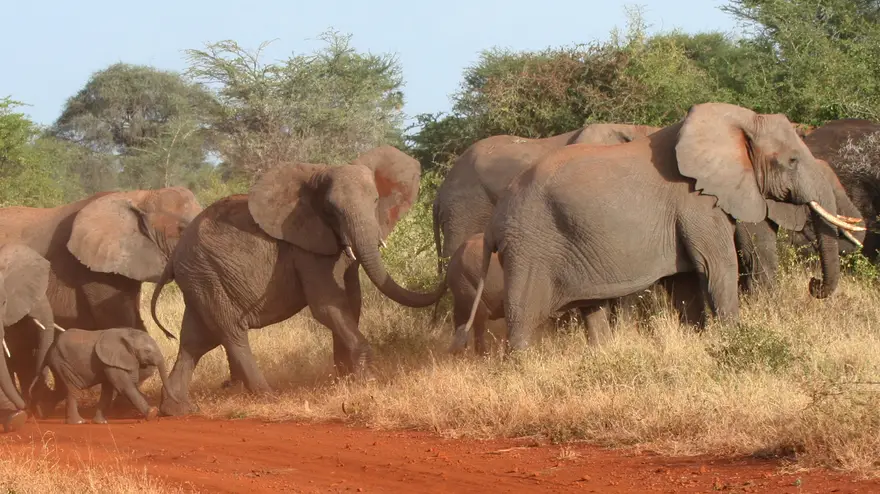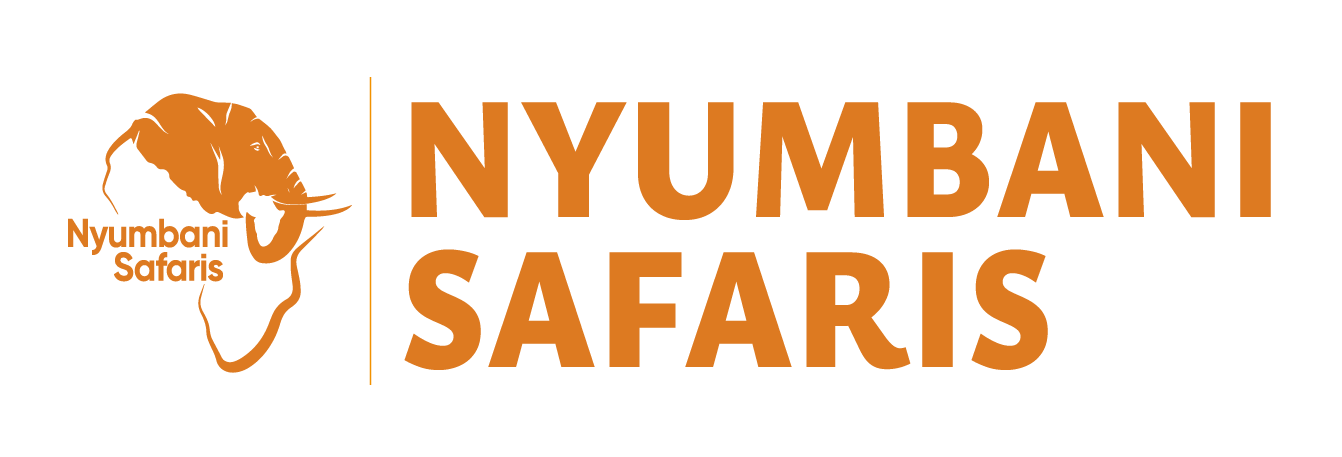Experience the Best of Kenya
Maasai Mara National Reserve
The Maasai Mara National Reserve is undoubtedly Kenya’s most notable and revered reserve. Its sheer size – extending to and eventually joining Tanzania’s Serengeti National Park – and stringent anti-poaching systems have made it famous for its thriving lion, cheetah, and leopard populations.
Maasai Mara is also a starting point for one of the oldest pilgrimages in history. Every year from July to October, the Great Migration sees thousands of zebra, wildebeest, and gazelle leave clouds of dust in their wake as they stampede toward (literally) greener pastures in the Serengeti. When on the move, their pace is frantic and panicky as they attempt to avoid being singled out by a watchful pride of lion or unsuspectingly clamber too close to a crocodile lying in wait near the riverbanks.
The reserve’s name is attributed to the Maasai tribe, who call the area home. Their original name for the land, “mara”, refers to the vast landscape “speckled” with animals and acacia trees and the cloud shadows that characterise the area. Maasai Mara is home to a range of lodges and camps where visitors can immerse themselves in an authentic Maasai Mara safari experience.
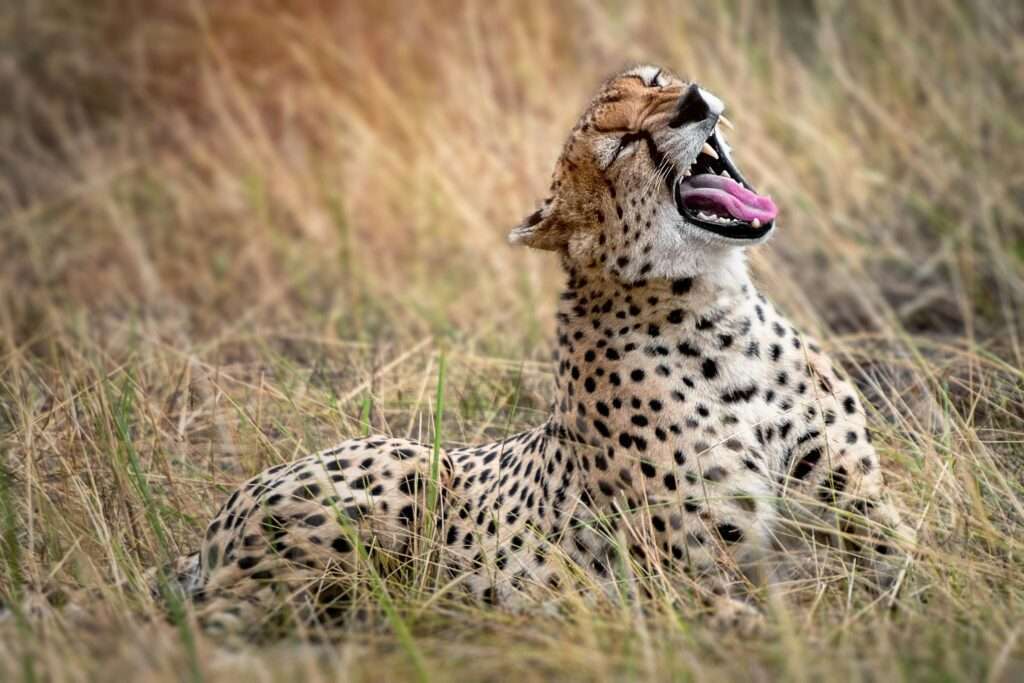
Amboseli National Park
Arid earth extending as far as the eye can see and vibrant oases of swamps teeming with life form the 40,000ha Amboseli National Park. In the distance, Mount Kilimanjaro’s expansive base culminates in its snow-covered peaks seen rising from the earth across the border. The dry months’ bare vegetation offers the perfect environment for relatively unobstructed views of the park’s inhabitants.
Guests can stay in any of the luxury lodges in Amboseli while they explore the tracks that stretch out across the plains of the park. While an array of large game and a list of over 300 bird species populate the park, getting close to herds of free-ranging elephants is Amboseli’s claim to fame. These gentle giants share the land with the semi-nomadic Maasai people, the custodians of the land who are always willing to share their customs with guests on village visits.
After the Maasai Mara National Park, Amboseli National Park is the second most-frequented in Kenya. It offers some of the best views of Mount Kilimanjaro just across the border, and of the free-ranging African elephants that are subject to the longest ongoing elephant study in the wild. Visitors are warned that malaria is found in the area and the necessary precautions should be taken before visiting.

Nairobi
The gateway to Kenya is its capital city, Nairobi. As the transportation hub of the country, the city’s airports, roads, trains, and bus stations are responsible for ferrying guests to the aquamarine waters of the coastline, the expansive Rift Valley Lake region, and wide open savannahs of the Maasai Mara or the verdant landscapes in the central highlands.
The Kenyan capital is, however, well worth exploring in its own right. The continent’s largest and second-largest mountains, Kilimanjaro and Mount Kenya, are visible from the city on a clear day. Just west of the city, Karen Blixen’s legendary Ngong Hills rest against the landscape. Her home in Nairobi has since been turned into the Karen Blixen Museum, where guests are bound to recognise many scenes from Out of Africa.
The Nairobi National Park can be reached by bus or car, and visitors are able to observe a multitude of wildlife going about their day against the stark backdrop of the city. A visit to the David Sheldrick Wildlife Trust, located in the park, is a must. Visitors can observe orphaned elephants and rhinos being led by their carers for a daily mud bath.
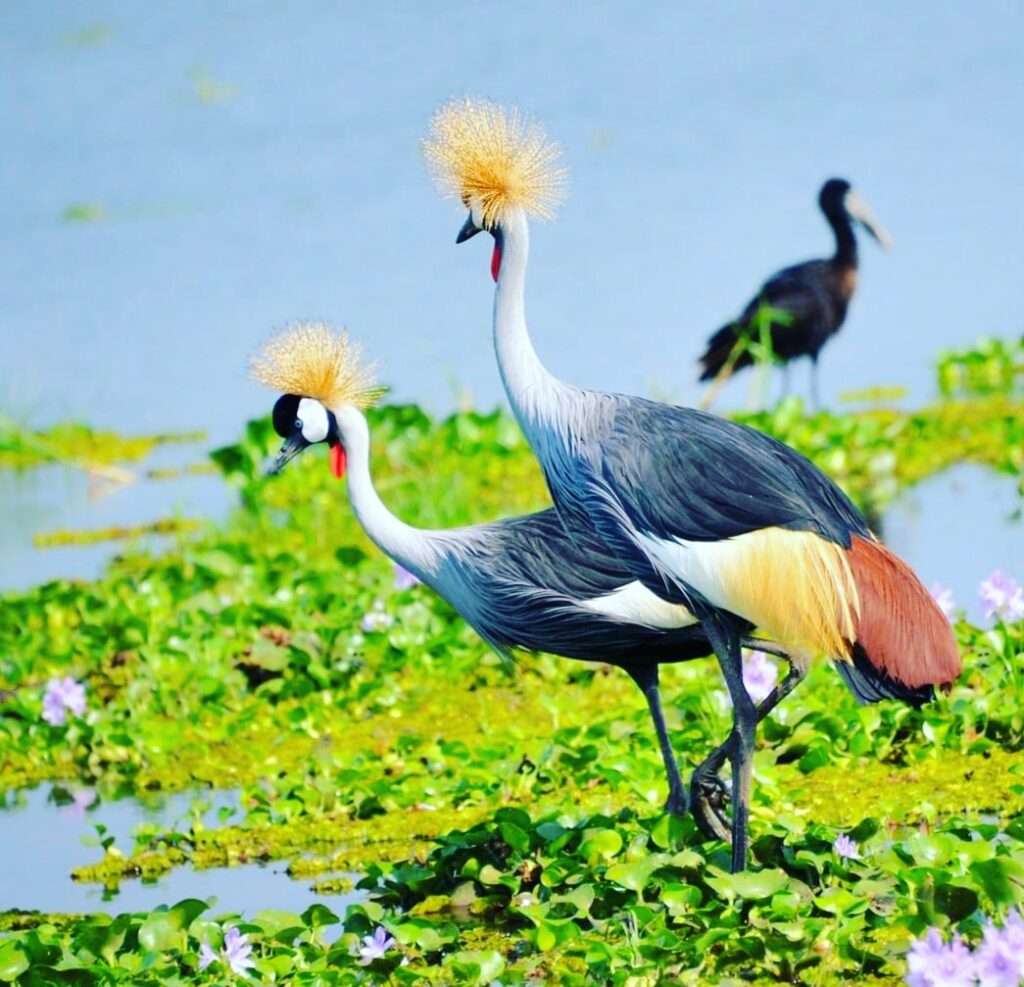
Laikipia Safaris
In addition to lion and rhino, Laikipia boasts over two thousand elephants and lots of leopard! Other predators here are cheetah, hyena, jackal, aardwolf, fox and wild dog, while the herbivore count includes a quarter of Africa’s Grevy’s zebra population, giraffe, gazelle, eland, impala, oryx, waterbuck, and many more – in fact, the region is home to 85 mammal species! The birdlife of Laikipia is seriously impressive too. The official April 2013 checklist records over 500 species here! Ostrich, pelicans, grebes, cormorants, darter, finfoot, bitterns, herons, egrets, storks, ibises, spoonbills, flamingos, kites, eagles, guineafowl, partridge, plovers, sandpipers, cuckoos, nightjars, bee-eaters, hornbills… this is a birder’s paradise and we urge you to pack your binoculars!
Laikipia is also renowned for its conservation efforts, both past and ongoing. Worth a special mention is the Northern White Rhino Sanctuary, in Ol Pejeta Conservancy. Here, two of the world’s remaining northern whites are kept under constant surveillance, initially in specially built bomas with access to a paddock, then within a larger and semi-wild enclosure. The Sweetwaters Chimpanzee Sanctuary, also in Ol Pejeta Conservancy, does sterling work too. It is a rescue centre for over forty chimps – some of these are confiscated pets, while others are orphans, having lost their parents to the bush meat trade. Living in two troops either side of the Ewaso Nyiro River, these animals are well looked after and many travellers to the Conservancy enjoy a visit.
It is possible to visit the Rhino Sanctuary as well, but overall activities in Laikipia focus on game drives and game walks. Tracking is popular too – and if you are a keen runner and you happen to be in Lewa Wildlife Conservancy in June, you could take part in the Lewa Marathon! This event aims to raise funds for the excellent conservation efforts that are ongoing in Laikipia.

Lewa-Borana Landscape
The diverse ecosystems within the Lewa–Borana Landscape provide homes for all sorts of wildlife. As well as rhino, big game highlights comprise lion, leopard, elephant, and buffalo – that’s all the Big Five! Another species that has benefited from conservation endeavours is the Grevy’s zebra. Tall, with rounded ears and a slimmer stripe pattern than plains zebra, the Grevy’s is a delight to behold. The area contains over 300 individuals, enjoying the grazing on the plains.
Other predators to watch out for include cheetah and wild dog. And Lewa–Borana also plays host to a group described as the ‘Northern Specialty Species’ – Grevy’s zebra, reticulated giraffe, Somali ostrich, Beisa oryx, and gerenuk. These are fun to find while you’re on vehicle and walking safaris!
The landscape’s birdlife is very impressive as well. With over 350 species to spot, this really is a paradise for keen birders! They include grebes, pelicans, cormorants, herons and egrets, storks, ibises and spoonbills, flamingo, ducks and geese, loads of raptors, quails and francolins, guineafowls, rails, bustards, stilts and avocets, plovers, sandpipers, doves and pigeons… remember to pack the binoculars!
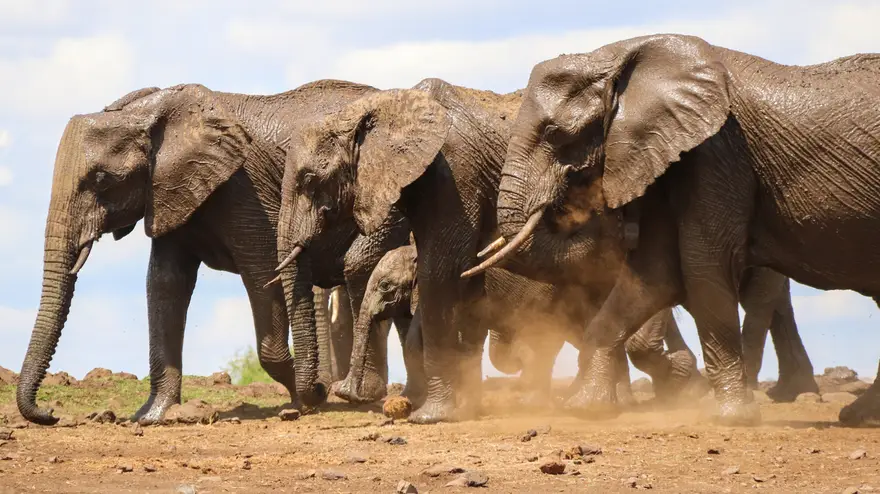
Lake Nakuru and Naivasha Safaris
Between them, the lakes contain a wealth of wildlife. Lake Naivasha is home to impressive numbers of hippo! There are a lot of fish here too, but populations have varied over the years because of climate change, over-fishing and the accidental introduction of invasive species – for example, common carp in 2001. Today, carp are still pretty rampant! Both lakes are a haven for birds, with over 400 species recorded to date. These include the magnificent Goliath heron and eight other types of heron, in addition to loads of ducks, geese, grebe, guineafowl, storks, flamingos, cormorants, pelicans, egrets, bitterns, ibises, spoonbills, hawks, kites, coots, cranes, kingfishers, bee-eaters, parrots, owls… and that’s just for starters!
Lake Nakuru offers one of the most spectacular scenes worldwide – the vast flocks of flamingo feasting on the algae that thrive in the lake’s warm waters! Both lesser and greater flamingo can be spotted, distinguishable by their differing bills and plumage. As far as land mammals are concerned, Lake Nakuru has plentiful black and white rhino, in addition to such species as leopard, cheetah, giraffe and waterbuck. From Lake Naivasha, travellers need only take a trip to Crescent Island Game Reserve to walk among the likes of giraffe, zebra, wildebeest and impalas.
There are no predators on the island, so the experience constitutes a very safe safari! Those who love the big cats might well prefer to combine Nakuru with a trip to Hell’s Gate National Park, south of Lake Naivasha. Numbers are quite modest here, but it is possible to see lion, leopard and cheetah. There are klipspringer and reedbuck too, amid interesting scenery that incorporates two extinct volcanoes and the Hell’s Gate Gorge itself, flanked by striking red cliffs.

Meru National Park Safaris
It is the landscape of Meru that is responsible for attracting its hoards of animals. The park comprises 870 sq. km of sprawling grasslands, fertile bush and acacia woodland. All five members of the Big Five (lion, rhino, leopard, Cape buffalo and African elephant) are at home here, in addition to loads of other species – cheetah, giraffe, zebra, oryx, kudu and gazelle, for example. And the park’s beautiful rivers and streams attract plentiful hippo, crocodile and freshwater turtle.
The birdlife of Meru is equally impressive, with highlights such as ostriches, numerous raptors, Pel’s fishing owl, spectacular sunbirds and starlings, and rare types such as the giant kingfisher! This really is a birder’s paradise.
Activities in Meru focus on viewing all this wildlife, on game drives and game walks. As the park is not teeming with tourists, it provides a very authentic safari experience. We highly recommend a trip to the successful rhino sanctuary, while the site of Elsa’s grave – the remote north bank of the Ura River in the deep south of Meru – is also well worth a visit.
